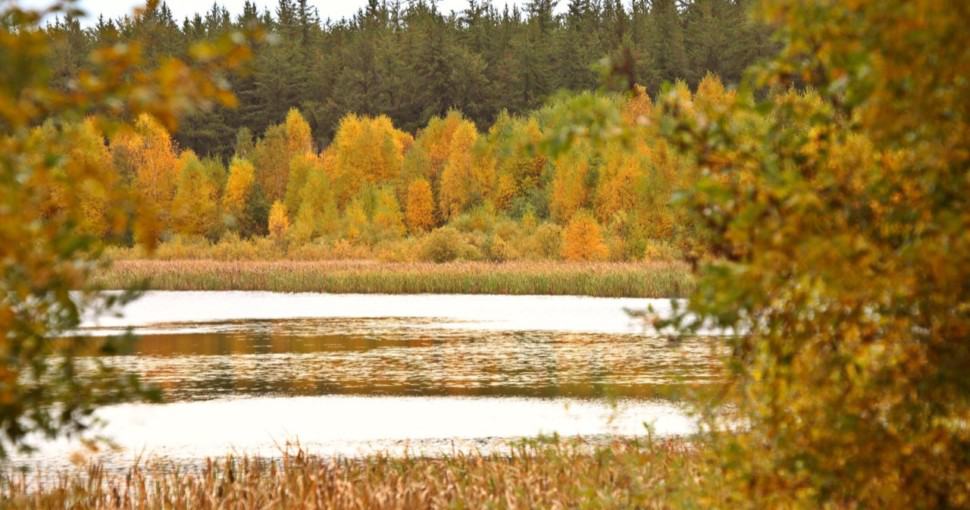There are many different types of trees in Canada. Some unique to certain regions, others common across the country. This post outlines the most common tree species found in Canada and their characteristics. This blog post will cover some of the more common tree species that can be found across Canada. This should give readers an idea about what they might find if they take a walk through their local park or forest preserve during springtime!
Contents
- 1. Sugar Maple (acer saccharum)
- 2. Red Oak (quercus rubra)
- 3. Eastern White Cedar (thuja occidentalis)
- 4. American Beech (fagus grandifolia)
- 5. Lodgepole Pine (pinus contorta)
- 6. Paper Birch (betula papyrifera)
- 7. White Spruce (picea glauca)
- 8. Balsam Fir (abies balsamea)
- 9. Tamarack (larix laricina)
- 10. American Mountain Ash (sorbus americana)
- 11. Canada Plum (prunus nigra)
- 12. Amur Chokecherry (prunus maackii)
- 13. Arbutus (arbutus menziesii)
- 14. Balsam Willow (salix pyrifolia)
- 15. Black Cottonwood (populus trichocarpa)
- 16. Blackberry Elder (sambucus melanocarpa)
- 17. Bur Oak (quercus macrocarpa)
- 18. American Elm (ulmus americana)
- 19. Beaked Hazelnut (corylus cornuta)
- 20. Basswood (tilia americana)
- 21. Eastern Juniper (juniperus virginiana)
- 22. European Larch (larix decidua)
- 23. Shagbark Hickory (carya ovata)
- 24. Kentucky Coffeetree (gymnocladus dioicus)
- 25. Black Gum (eucalyptus ovata)
- 26. Bigtooth Aspen (populus grandidentata)
- 27. Tulip Tree (liriodendron tulipifera)
Canada is home to lush vegetation, stunning mountains, and precious wildlife. The trees of Canada are the most striking trees you will see anywhere in the world. All trees in the country can either be classified as coniferous or deciduous trees. Coniferous trees are usually called evergreens or needle-leaved trees. They are also known as softwoods. On the other hand, deciduous trees are known as broadleaf trees because most of them shed their leaves during the fall season. Sometimes, we also refer to them as hardwoods.
You might not be aware of this, but Canadians love trees! They love planting and preserving trees that are prone to catastrophic damages caused to sensitive ecosystems. The Canadian government plays an integral part in ensuring a healthier, more sustainable country.
There are hundreds of different species of trees found in Canada. With so much energy and power, they give out oxygen and make us feel like we’re among friends. In this article, we will emphasize trees and discuss the 27 most common trees you can find in Canada – the True North Strong and Free land. Remember that not all trees on this list exist naturally in Canada. Some are planted for aesthetics, shade, shelter, or fruit.
1. Sugar Maple (acer saccharum)
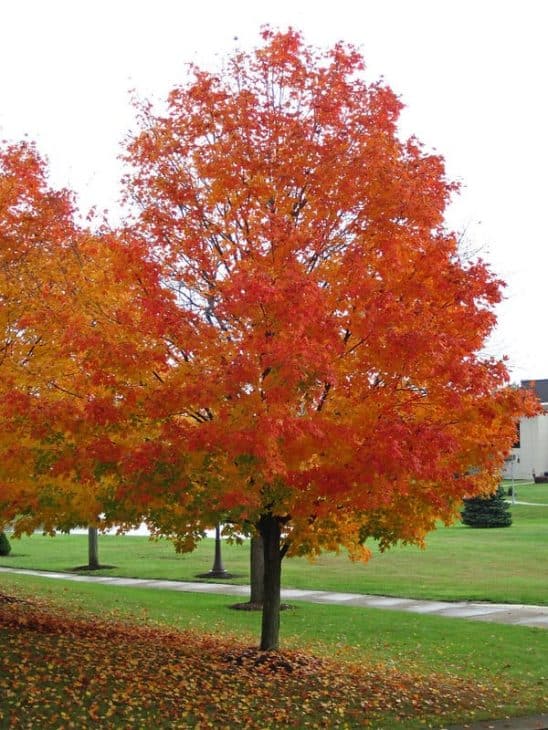
Sugar maple is one of ten maple species found in Canada. It is native to Ontario and Quebec. It is a deciduous tree that usually reaches heights of 25 to 35 meters. The sugar maple tree produces the distinct leaf that is found on Canada’s flag. During spring, Canadians all across the country harvest the sugar maple tree’s sap for syrup and sugar.
2. Red Oak (quercus rubra)
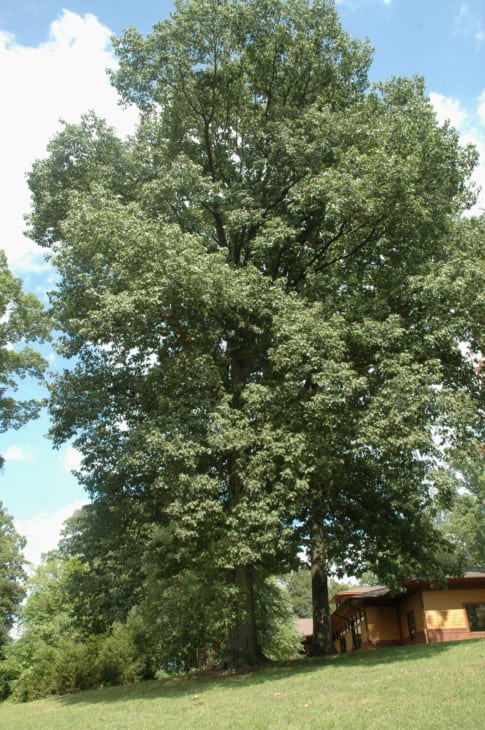
Unlike the US, you will only find red oak in a small swath of lower Eastern Canada. The tree offers premium wood that is ideal for furniture and construction. Hence, the tree is constantly under threat from logging. The acorns that fall off the red oak tree do not germinate until they are exposed to temperatures between 4 to 5 degrees Celsius for three months straight! Red oak is a truly Canadian tree!
3. Eastern White Cedar (thuja occidentalis)
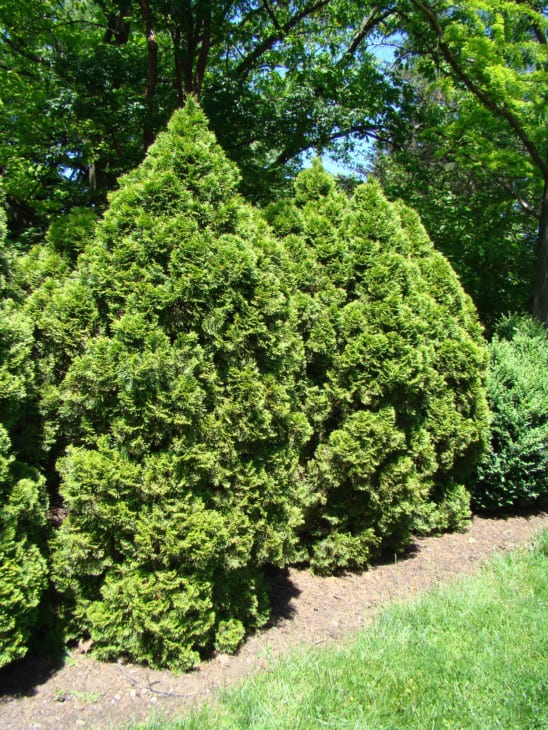
The eastern white cedar is only a medium-sized tree that grows to a height of 15 meters and has a trunk diameter of 0.9 meters. It has a red-brown bark that peels in narrow, longitudinal strips and fan-like branches with scaly leaves. The eastern white cedar is native to the southern part of eastern Canada and the adjacent part of the northern United States.
4. American Beech (fagus grandifolia)
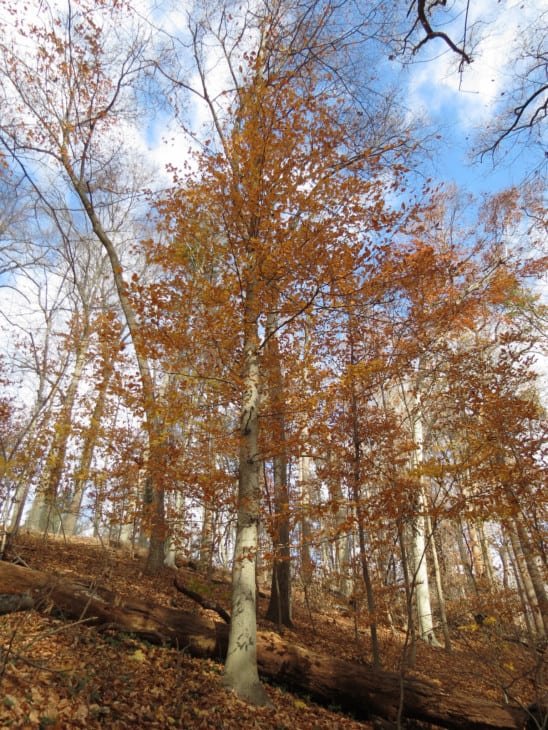
The American beech is a deciduous tree that grows to heights of 16 to 35 meters. It has smooth, silver-gray bark and dark green, sparsely-toothed leaves. The winter twigs of the American beech are long and slender and have rows of overlapping scales on the buds. The American beech tree grows flowers of both sexes on the same tree and produces small and sharply angled fruit.
5. Lodgepole Pine (pinus contorta)
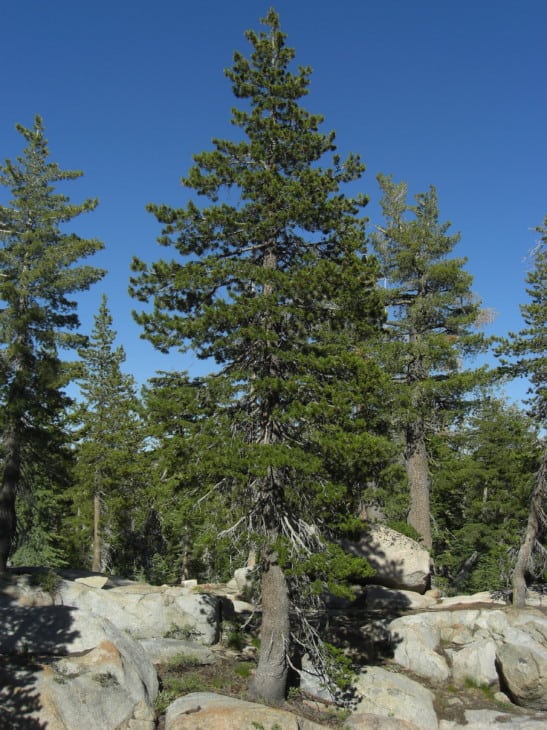
The lodgepole pine is a tall and slender conifer tree with a straight trunk. It has an orange-brown bark, less than 2 cm thick. Its branches curve upwards, and it grows to a height between 20 to 30 meters. The lodgepole pine has a trunk that measures 30-45 centimeters in diameter and has needle-shaped, spirally twisted, stiff, very sharp, and pointed yellowish-green leaves. The tree grows on a wide variety of sites but prefers well-drained sandy soils. As of May 1984, the lodgepole pine is the official provincial tree of Alberta.
6. Paper Birch (betula papyrifera)
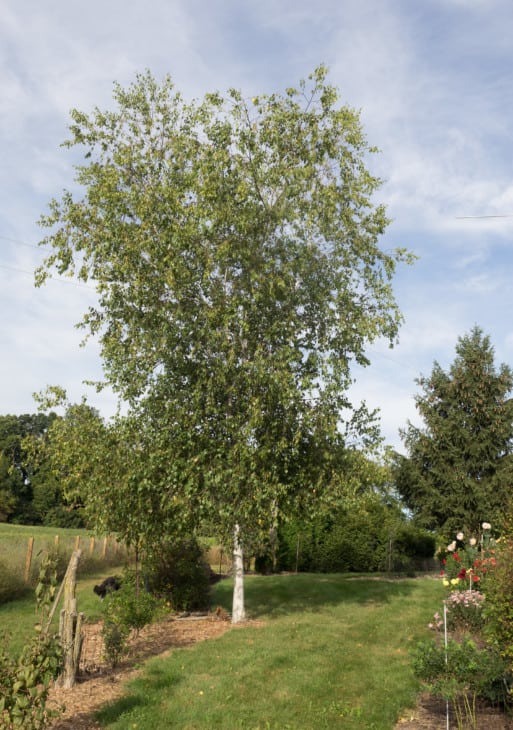
The paper birch is the provincial tree of Saskatchewan. It is also known as the canoe birch or white birch. This tree has a long life and can live up to 50 years. Like many Canadians, this tree doesn’t do very well in heat and humidity, but you will see it stand tall and proud during harsh winter. It is a medium-sized deciduous tree typically reaching 20 meters in height. The leaves are dark green and smooth and are alternately arranged on the stem.
7. White Spruce (picea glauca)
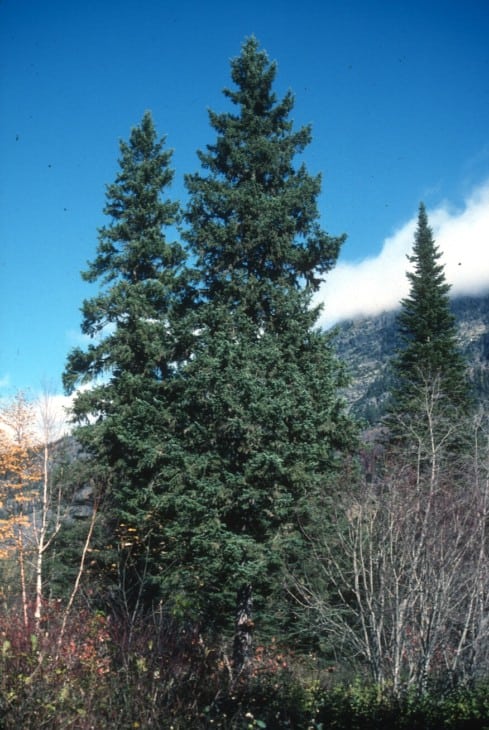
The white spruce is a dense conifer tree with a straight, tapered trunk. It has a scaly, thin, grey to ashy-brown bark and horizontal branches. The average height for the white spruce is 25 meters. Its leaves are needle-shaped, straight, stiff, and bluish-green. The white birch is common throughout Canada and is found in various soil types and climatic regions.
8. Balsam Fir (abies balsamea)
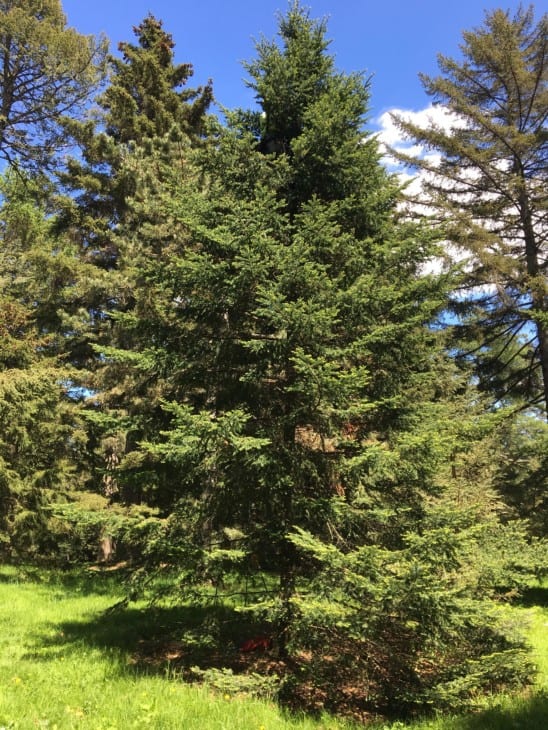
The balsam fir is a symmetrical coniferous tree with a narrow, conical crown. It has a smooth, pale grey bark on young trees and a rough, scaly, brown bark on older trees. The average height for the balsam fir is 18 meters. It has needle-shaped, flattened leaves with round, blunt tips and dark shiny green surfaces.
9. Tamarack (larix laricina)
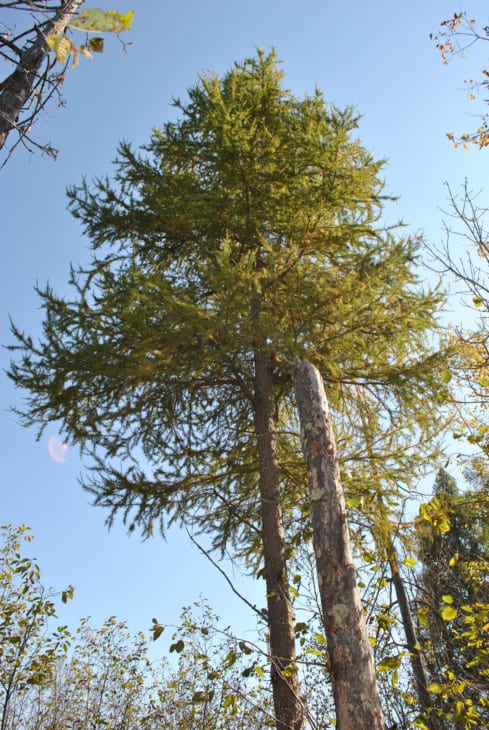
Tamarack is a slender tree with a straight trunk. It has a thin, smooth, and grey bark when it’s young. The bark becomes dark reddish-brown and scaly as the tree gets older. The branches of a tamarack tree are slightly curved downwards. The tree has an average height of 20 meters. It has needle-shaped pale green leaves in feather-like clusters that turn bright yellow in fall. Tamarack is mainly found in wetlands in central and northern Alberta.
10. American Mountain Ash (sorbus americana)
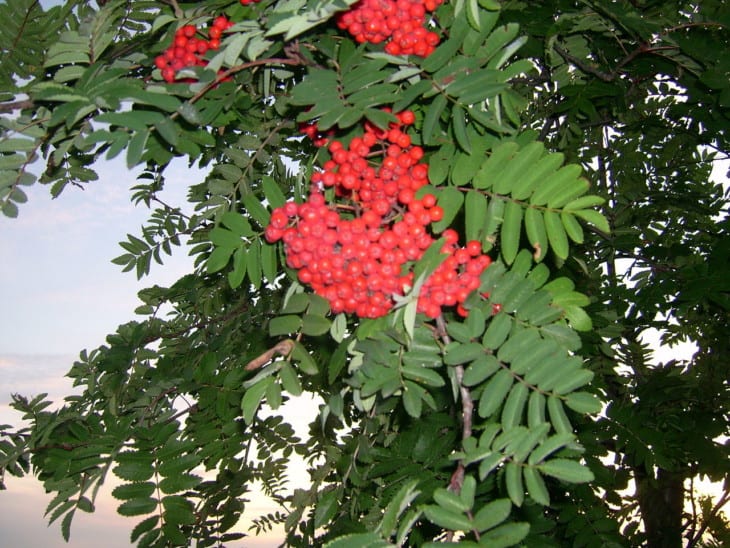
American mountain ash is a relatively small tree that reaches an average height of 12 meters. It greatly resembles the European mountain ash. It has a light gray bark with a smooth surface. The wood from an American mountain ash tree is lightweight, soft, and close-grained but weak. It has slender, grooved, dark green or red leaves with an unequally wedge-shaped or rounded base. In winter, the tree produces dark red, acute buds.
11. Canada Plum (prunus nigra)
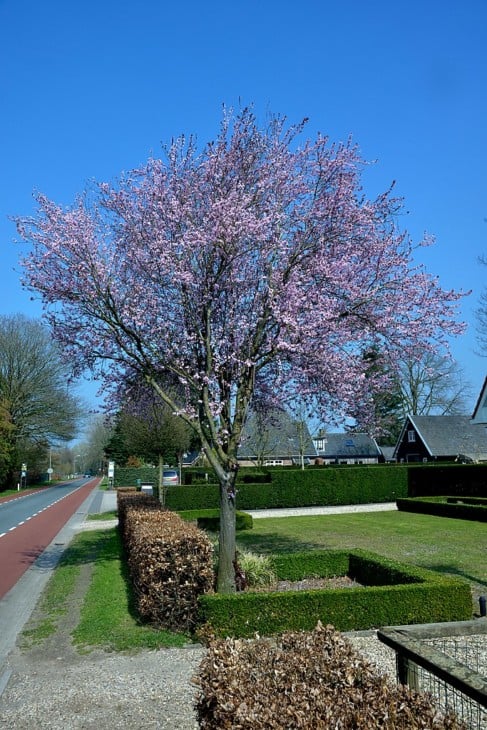
The Canada plum is a tree native to eastern North America, from Nova Scotia and southeastern Manitoba to the far south in Connecticut, Illinois, and Iowa. The tree has simple leaves that are 2 to 4 inches long. The trunk of the Canadian plum can grow up to 2.75 inches in diameter. The tree’s bark is initially gray and smooth, but it becomes coarse and peels with age. The Canadian plum tree produces a purplish red fruit with a thin waxy bloom and a single hard seed inside.
12. Amur Chokecherry (prunus maackii)
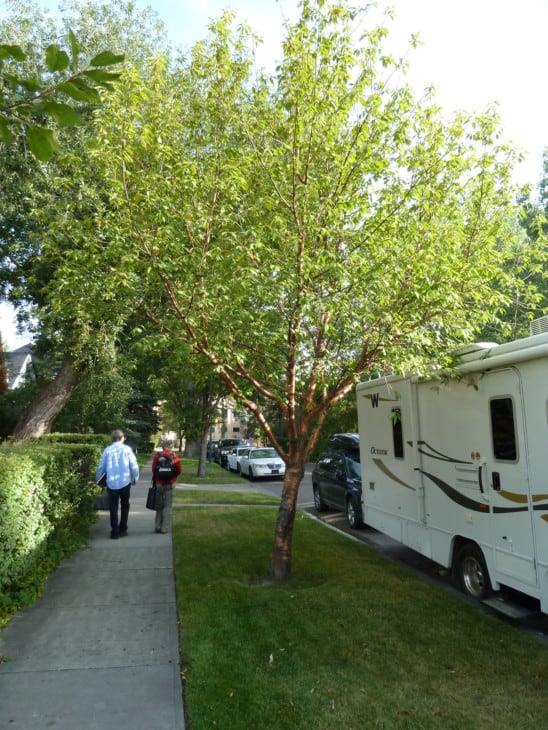
Amur chokecherry is an irregularly shaped shrub/small tree with a slender, twisted trunk. It has a narrow and irregular crown composed of crooked, spreading branches. The chokecherry’s bark is smooth and is reddish-brown in color. It turns black with age. The average height of this tree is between 2 to 8 meters. The thick and leathery leaves of this tree are ovate with sharp points and have dark green surfaces. This tree also produces small, creamy-white flowers and clusters of round, deep red to dark purple fruits.
13. Arbutus (arbutus menziesii)
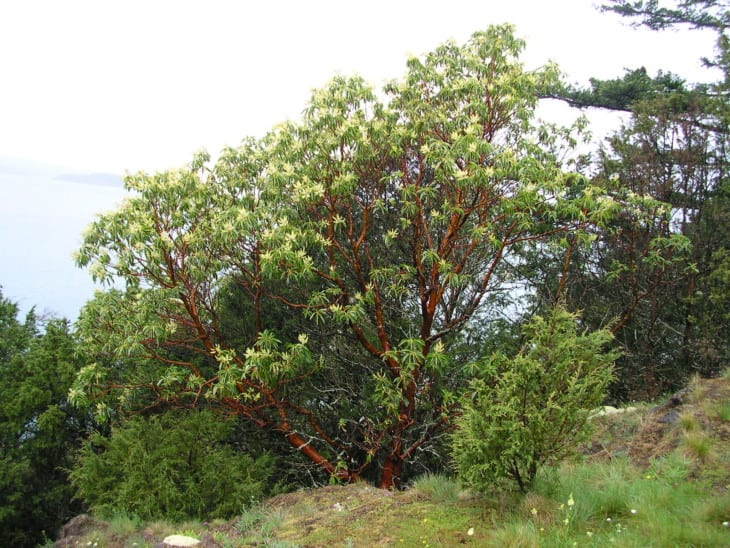
Arbutus is a broadleaf evergreen tree native to the western coastal areas of North America, from British Columbia to California. The tree’s waxy evergreen foliage, contorted growth habit, and distinctive flaky bark make it a striking sight in the coastal cliffs and hills. It has a rich orange-red bark that peels away in thin sheets as the tree matures, leaving behind a greenish-silvery appearance with a satin sheen and smoothness. During spring, the tree bears small bell-like flowers, and in fall, it produces red berries.
14. Balsam Willow (salix pyrifolia)
Balsam willow is one of several common species of willow found in Canada. It is a medium-sized shrub, usually less than 2 meters. It is primarily found in the northern half of Minnesota in wet places like shores. You can recognize it by its shiny red twigs, red leaf stalks, and hairless pale blue-green leaves with a network of prominent veins on the underside. The female flowers and fruits from the tree are hairless, whereas the male flowers have two stamens.
15. Black Cottonwood (populus trichocarpa)
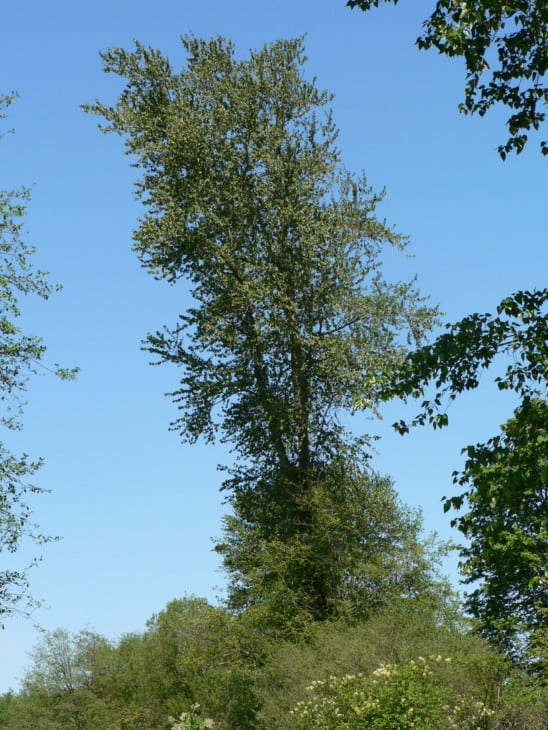
Black cottonwood is a deciduous tree native to western North America. It is a large tree used mainly for timber. It has an average height of 30 to 50 meters and a trunk diameter of over 2 meters. The bark is grey and covered with lenticels. The leaves have a length between 7 to 20 centimeters. They have dark green, glossy upper sides and light greyish-green undersides.
16. Blackberry Elder (sambucus melanocarpa)
Blackberry elder is a genus of flowering plants. This species is more widespread in the Northern Hemisphere, but you can also find it in the Southern Hemisphere in parts of Australasia and South America. The tree has oppositely arranged leaves. Each leaf measures 5 to 30 centimeters. The tree bears large clusters of small cream-colored flowers in late spring and clusters of small black, blue-black, or red berries during the rest of the year.
17. Bur Oak (quercus macrocarpa)
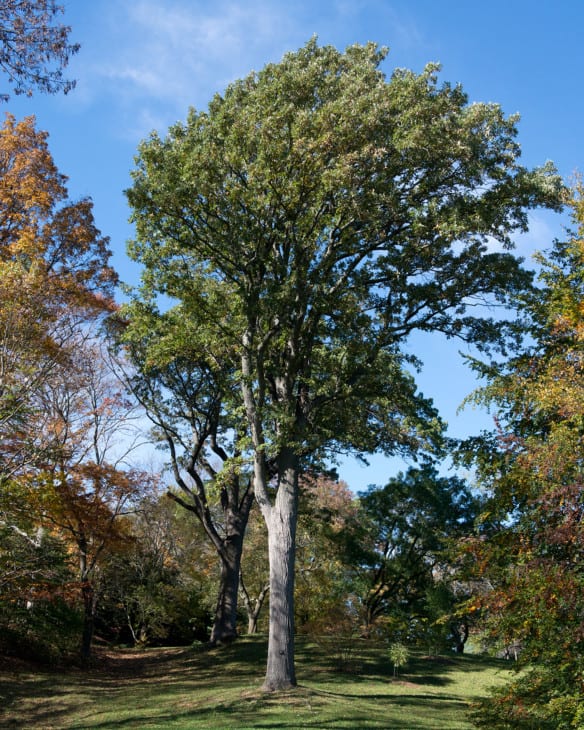
Bur oak is a tree species native to eastern North America. It is a large deciduous tree that grows up to 30 meters tall. It is one of the most massive oak trees, with a trunk diameter of 3 meters. It is one of the slowest-growing oaks, with a growth rate of only 30 centimeters per year when young. The leaves of the bur oak are broad with a lobed margin. The flowers are greenish-yellow catkins, produced in the spring. The acorns are enormous with large overlapping scales and often a fringe at the edge of the cup.
18. American Elm (ulmus americana)
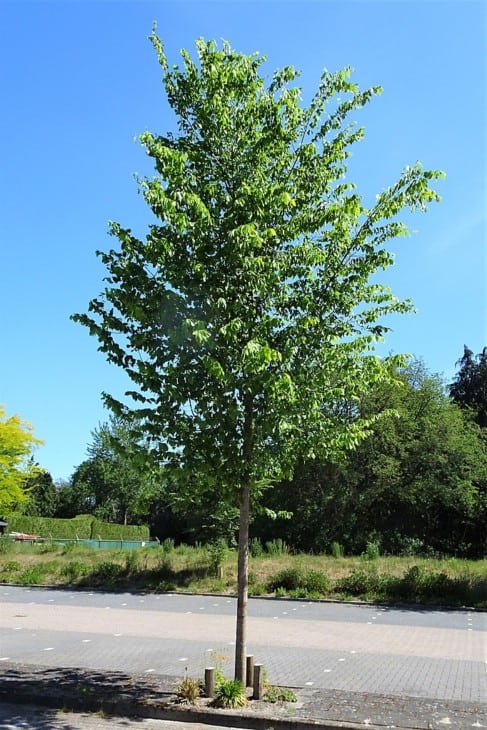
The American elm is a deciduous tree with an average height of 30 meters and an average trunk diameter of 1.2 meters. It has an umbrella-like canopy. The leaves are 7 to 20 centimeters long with an oblique base. The tree has small, purple-brown flowers, and the fruit is a flat samara with a circular papery wing surrounding a single seed.
19. Beaked Hazelnut (corylus cornuta)
The beaked hazelnut is a shrub that comprises several slender and erect stems with numerous branches. It has a rough, light brown bark and grows up to 3 meters in height. The leaves of the beaked hazelnut are ovate with coarsely-toothed margins and dull green surfaces. The tree also produces small, hanging, yellow male catkins and tiny reddish female flowers on the branch tips in spring.
20. Basswood (tilia americana)
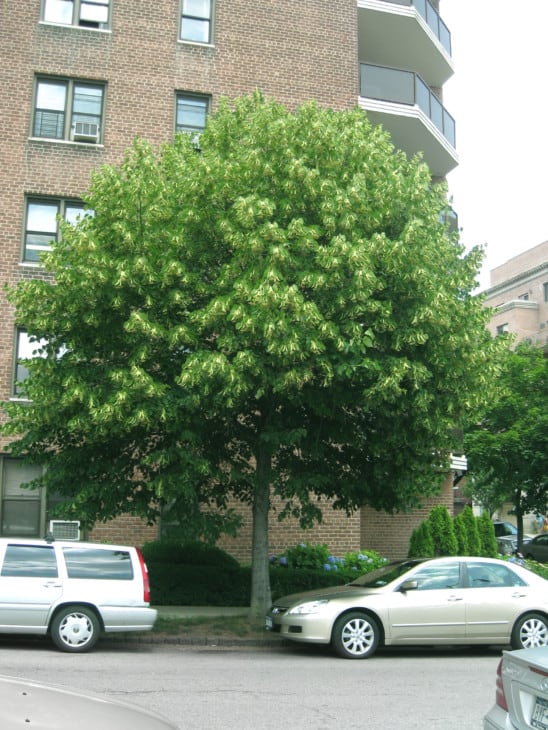
Basswood is a widespread species of tree found in North America. It is a medium-sized deciduous tree that reaches an average height of 37 meters and has a trunk diameter of 1 to 1.5 meters. It grows faster than many North American hardwoods and has a life expectancy of around 200 years.
21. Eastern Juniper (juniperus virginiana)
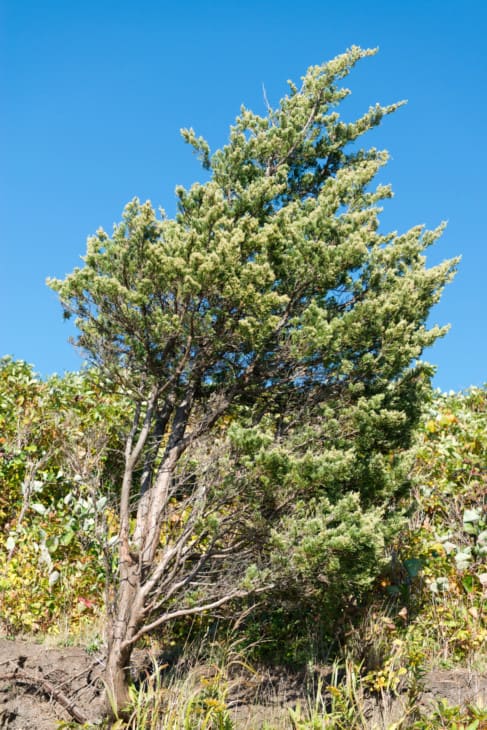
Eastern juniper is a dense slow-growing coniferous evergreen tree with an average height of 5 to 20 meters and a short trunk with a diameter between 12 to 39 inches. The bark of the eastern juniper is reddish-brown and peels off in narrow strips. The tree has two types of leaves: sharp, spreading needle-like juvenile leaves and tightly pressed scale-like adult leaves.
22. European Larch (larix decidua)
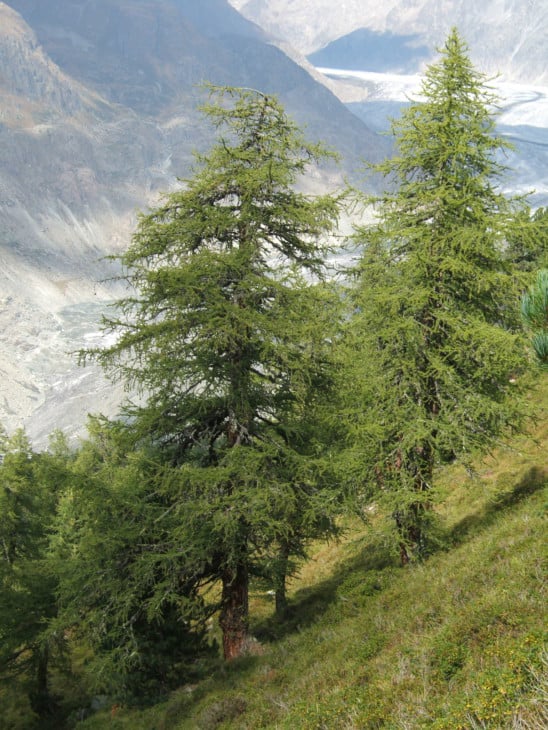
The European larch is native to the mountains of central Europe and lowland populations in northern Poland and southern Lithuania. It is a medium-sized deciduous, coniferous tree with an average height of 22 to 45 meters. The tree’s crown is iconic with main upswept branches and side pendulous branches. The needle-like light green leaves are 2 to 4 centimeters long. They turn bright yellow before the tree sheds them in the fall season.
23. Shagbark Hickory (carya ovata)
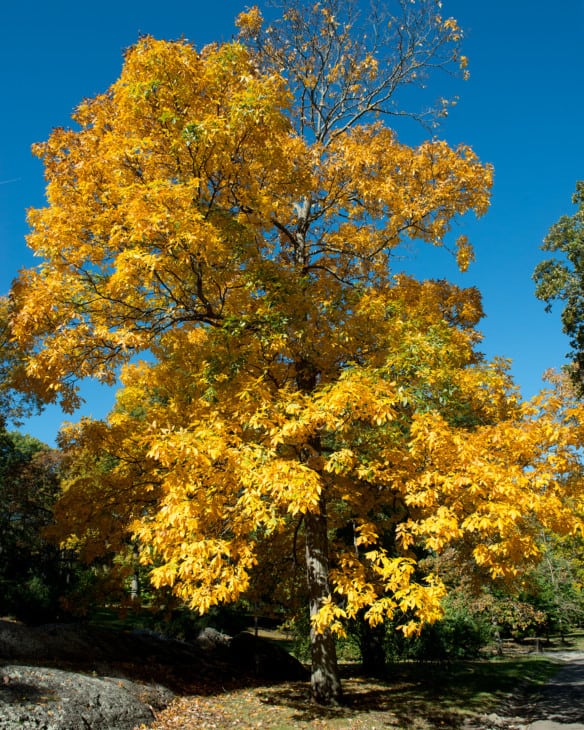
The shagbark hickory is common in southeast Canada. It is also prevalent in several US states like Virginia. It is a large, deciduous tree that grows well over 30 meters and can live for more than 350 years. As the name implies, mature shagbark hickories have a shaggy bark, whereas the younger trees have smooth barks. The shagbark hickory produces nuts that are edible and have a very sweet taste.
24. Kentucky Coffeetree (gymnocladus dioicus)
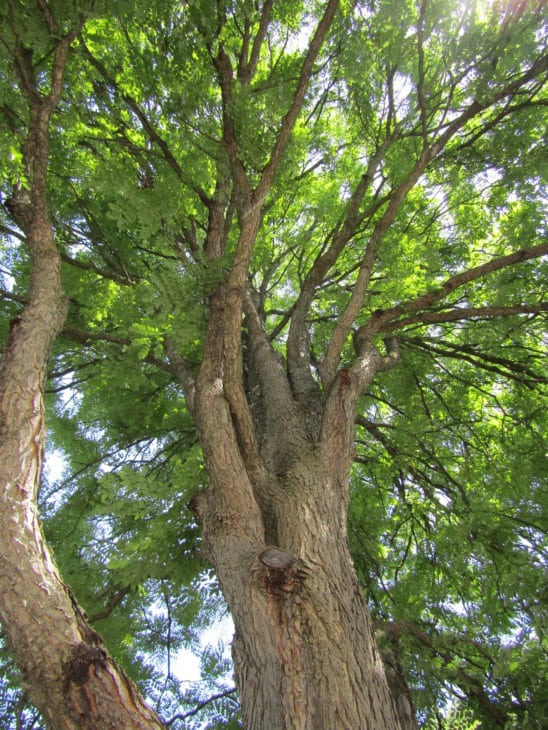
The Kentucky coffeetree is a native to the Midwest and upper south of North America. The seed from this tree is roasted and used as a substitute for coffee beans, hence the name “coffeetree.” However, unroasted pods and seeds from this tree can be toxic. Carpenters and furniture builders use the wood from this tree. It is planted in Canada mainly as a street tree.
25. Black Gum (eucalyptus ovata)
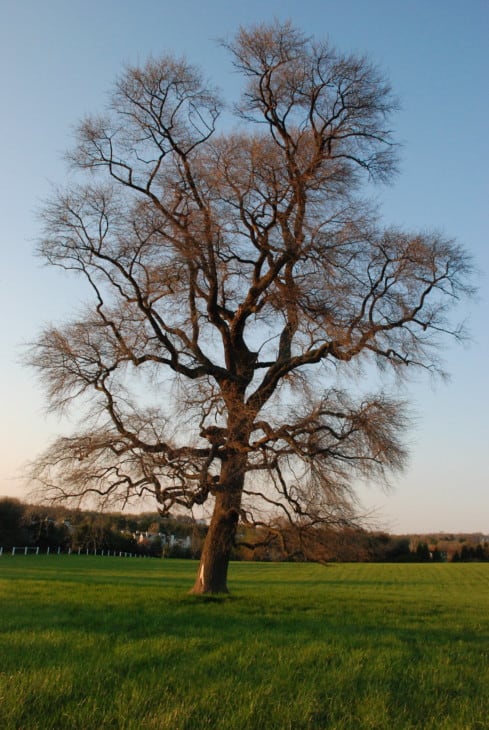
Black gum, also known as the swamp gum, is a small to medium-sized tree native to southeastern Australia. It has a smooth bark, glossy egg-shaped green adult leaves, green flower buds, white flowers, and bell-shaped fruit. It typically grows to 17 to 30 meters and has smooth, grey, whitish, or pinkish-grey bark.
26. Bigtooth Aspen (populus grandidentata)
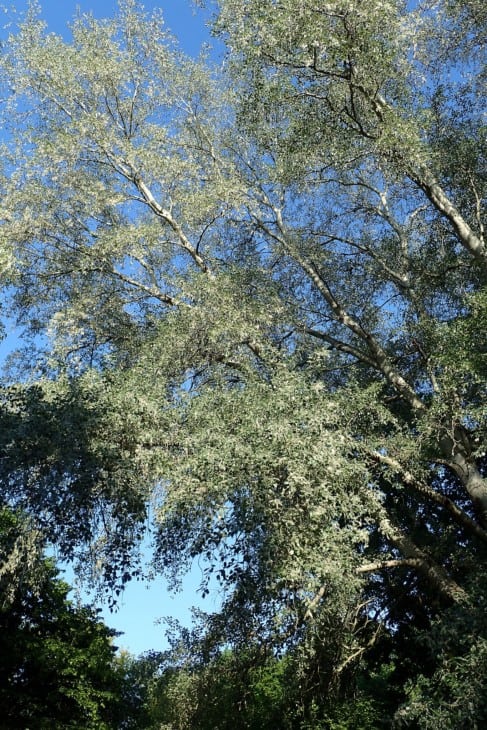
Bigtooth aspen is a deciduous tree native to eastern North America. It is a medium-sized deciduous tree with large leaves that tremble in the wind. The bark of younger bigtooth aspen trees is thin, smooth, and olive green in color. After 30 to 40 years, the bark starts turning gray, thick, and rough. The bigtooth aspen can also be found in several US states, including Pennsylvania and Indiana.
27. Tulip Tree (liriodendron tulipifera)
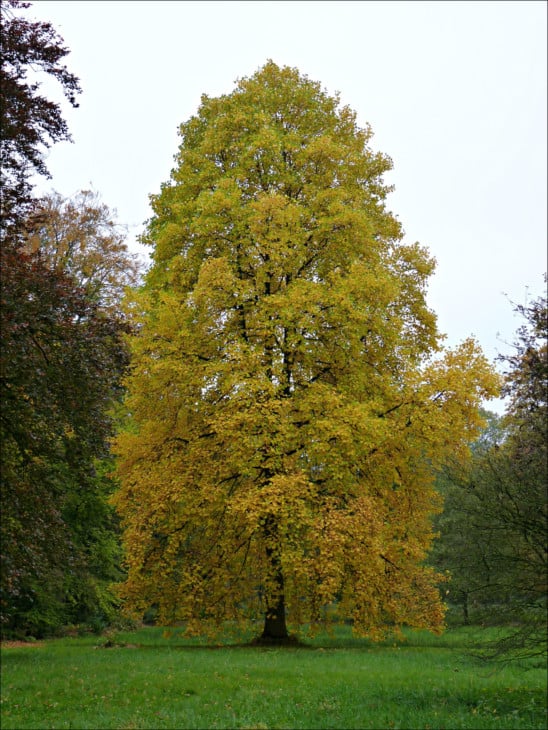
The tulip tree is the tallest eastern hardwood native to eastern North America. The tree can grow more than 50 meters tall. In extraordinary cases, it can reach a height of 60 meters. The trunk of a tulip tree has an average diameter of 1 to 2 meters, although it can grow much broader. The tree prefers deep, rich, and moist soil and has a relatively rapid growth rate. The tulip tree also produces dark-red winter buds.

